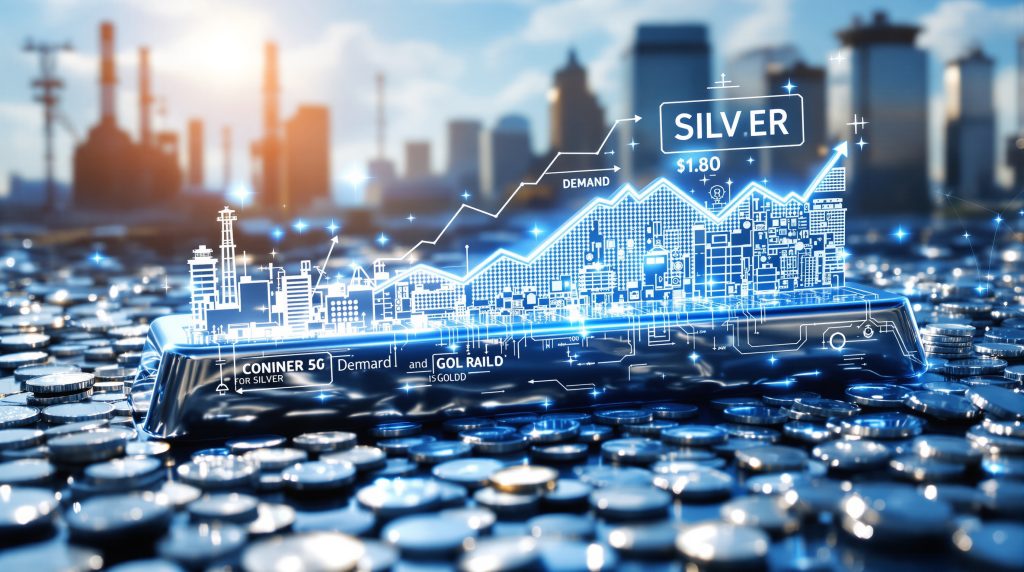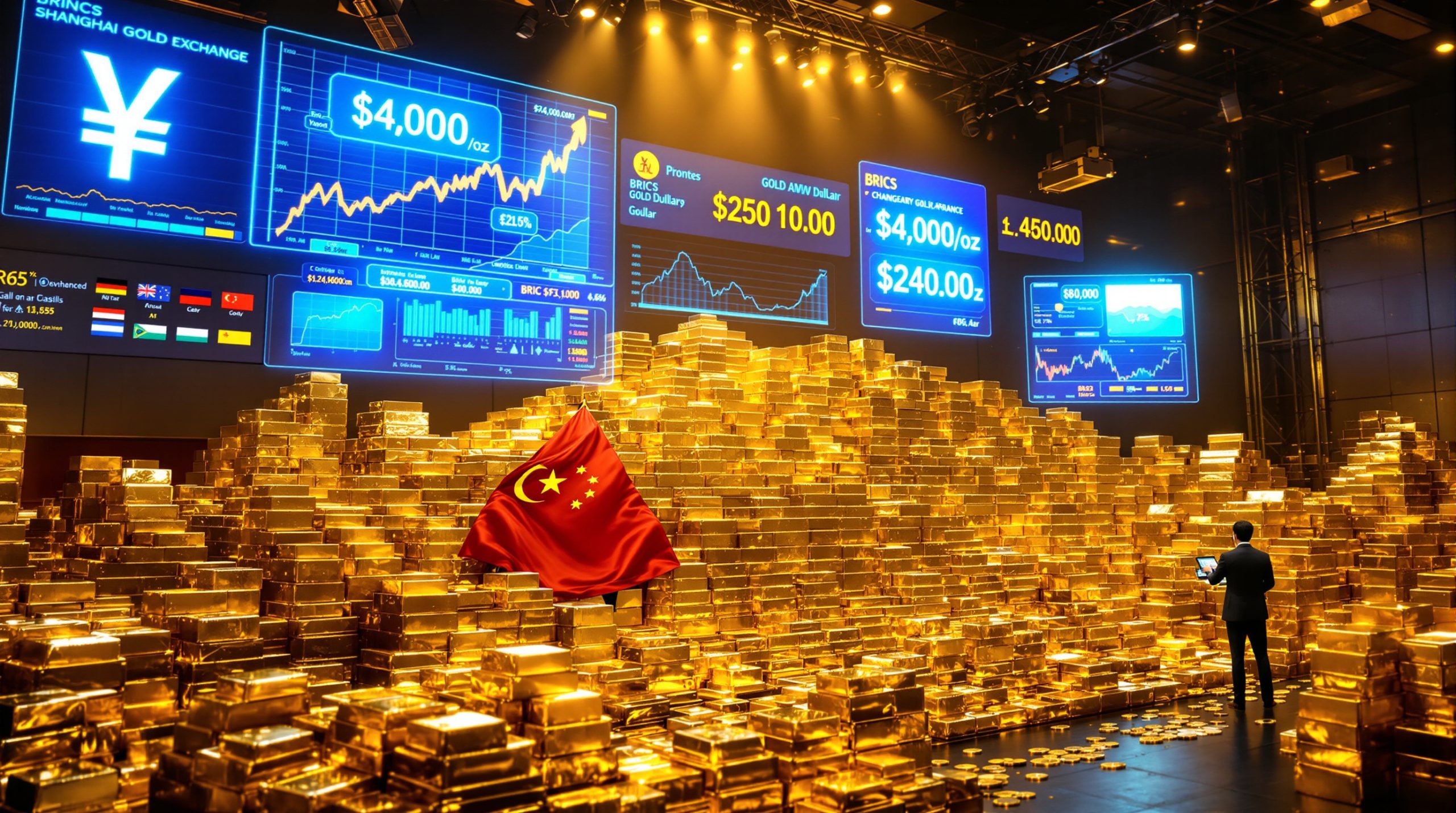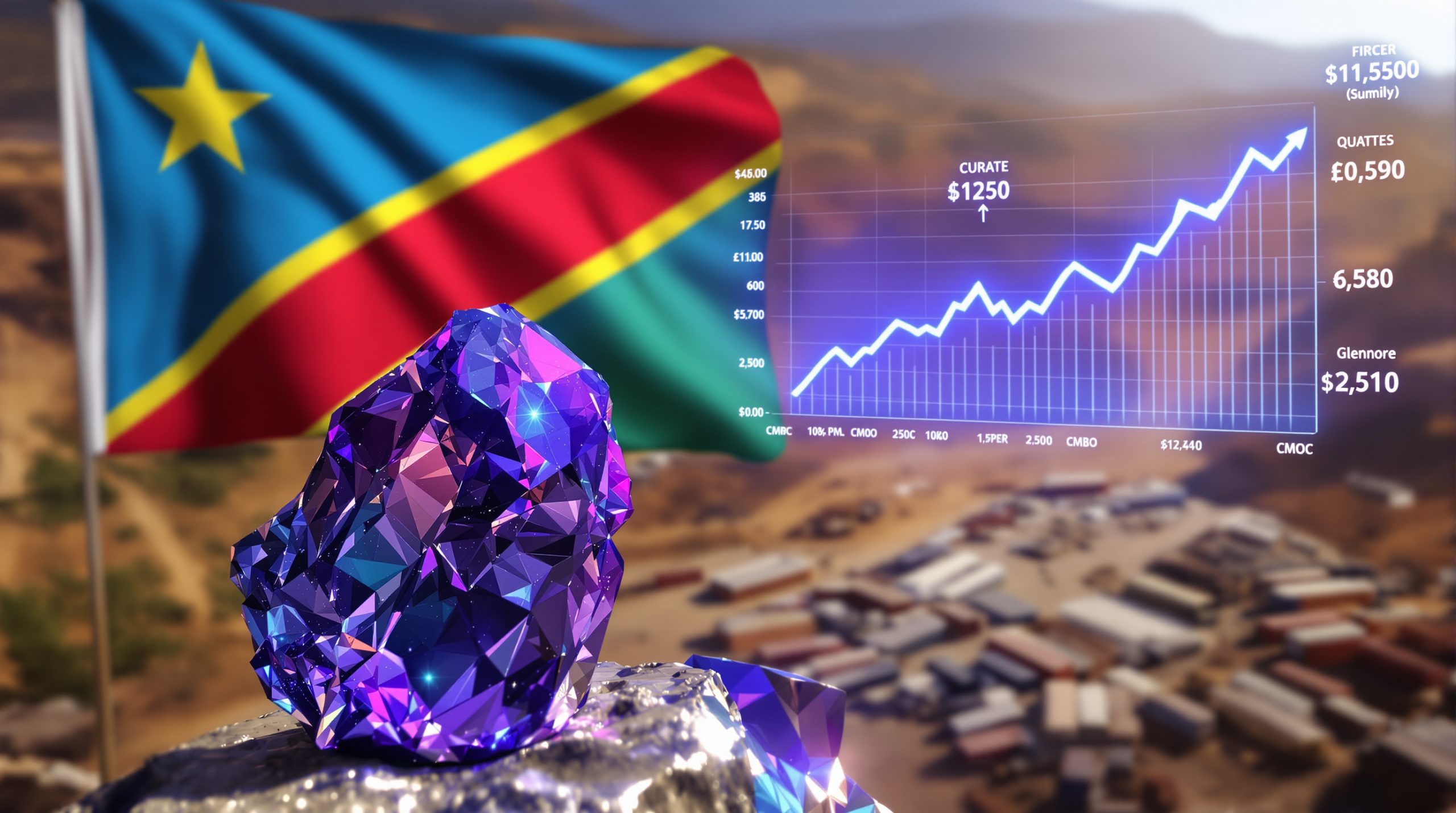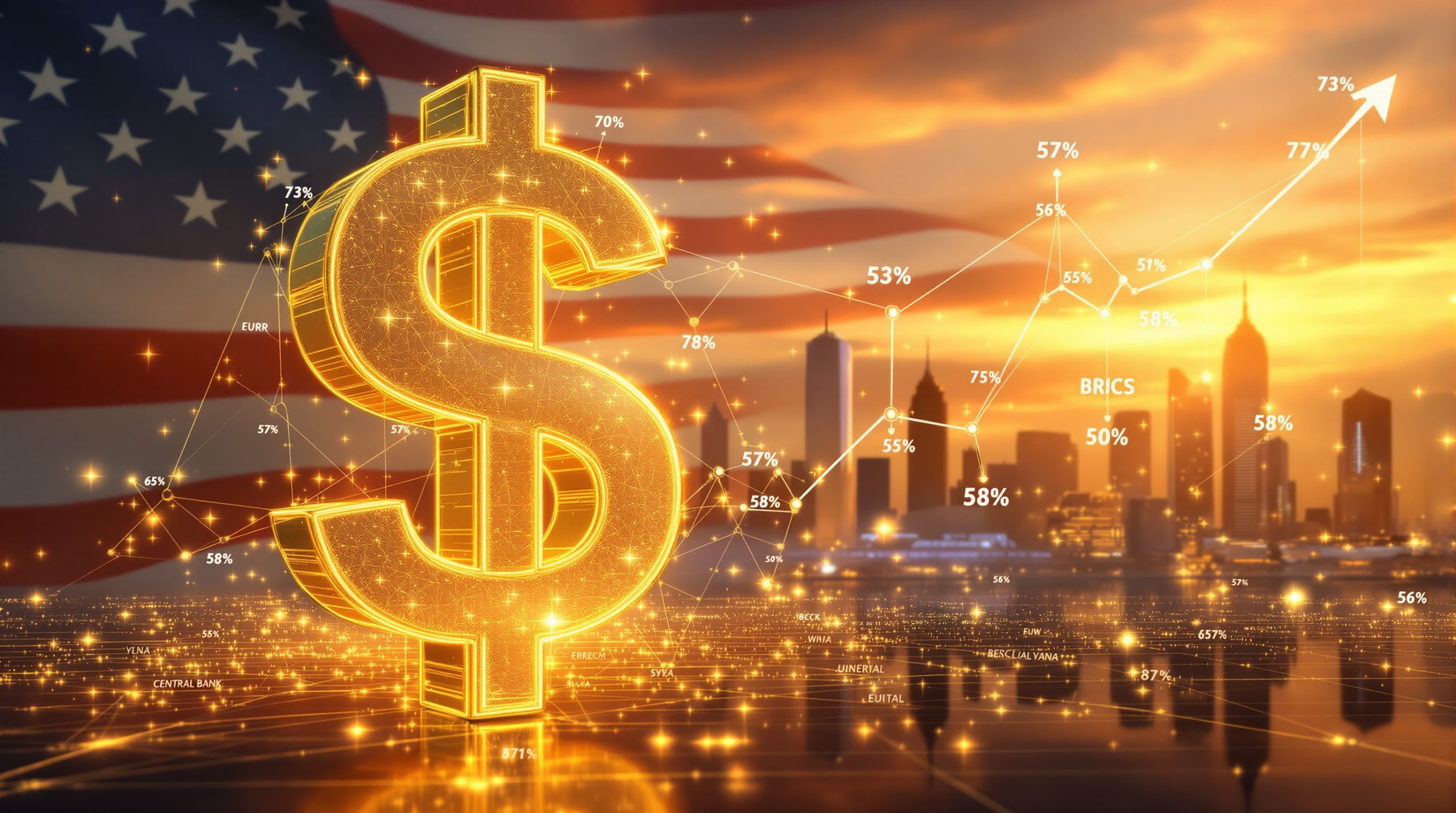Silver's Dual Identity: The Perfect Storm of Industrial and Monetary Demand
In today's rapidly evolving economy, silver stands at a remarkable crossroads in its 5,000-year history. Once primarily valued for its monetary properties, silver has transformed into an indispensable industrial metal while simultaneously strengthening its role as a financial asset. This unique dual identity has created unprecedented market dynamics, positioning silver's rise in industrial and monetary demand at the intersection of technological advancement and financial security.
The Evolution from Monetary Metal to Industrial Powerhouse
Silver's transformation has been dramatic and comprehensive. According to the Silver Institute's 2024 World Silver Survey, industrial applications now account for approximately 56% of total silver demand, representing a fundamental shift from its historical role. A century ago, only about 10% of silver was used in industry, with the vast majority serving monetary functions.
This evolution reflects silver's exceptional physical properties. With the highest electrical conductivity of all elements (63.0 × 10⁶ S/m), silver has become irreplaceable in numerous high-technology applications. As global economies increasingly focus on electrification, renewable energy, and advanced electronics, silver's industrial importance continues to expand.
Unlike gold, which remains predominantly a monetary and investment asset, silver now operates effectively in two distinct economic spheres. This hybrid status creates a market dynamic unlike any other commodity, where both industrial innovation and financial factors simultaneously drive demand.
Why Industrial Demand for Silver Is Reaching Record Levels
The industrial appetite for silver has accelerated dramatically in recent years, creating persistent supply challenges and establishing a solid foundation for sustained demand growth.
The Green Energy Revolution's Silver Requirements
The global transition to renewable energy has emerged as one of the most significant drivers of silver demand. Solar photovoltaic (PV) manufacturing now consumes a substantial portion of annual silver production, with each solar panel requiring approximately 15-20 grams of silver for optimal conductivity and efficiency.
According to the International Energy Agency (IEA), global solar PV capacity additions reached an unprecedented 346 GW in 2023, requiring an estimated 140-160 million ounces of silver. This trajectory shows no signs of slowing, with solar installations projected to continue growing substantially:
| Year | Global Solar Capacity Added | Silver Demand from Solar |
|---|---|---|
| 2020 | 138 GW | 85 million ounces |
| 2022 | 239 GW | 140 million ounces |
| 2023 | 346 GW | 155 million ounces |
| 2024 | 380 GW (est.) | 170+ million ounces (est.) |
The Silver Institute reports that photovoltaic demand now accounts for approximately 20% of total silver supply—a percentage that continues to grow as countries accelerate their renewable energy targets to meet climate goals.
Electrification and Connectivity: Silver's Critical Role
Beyond solar energy, silver's exceptional electrical conductivity makes it irreplaceable in several high-growth technology sectors:
-
Electric Vehicles: Each EV contains approximately 25-50 grams of silver in electrical contacts, battery management systems, and thermal management components—roughly twice the amount used in conventional vehicles.
-
5G Infrastructure: The rollout of 5G networks requires significantly more silver-containing components than previous generations, with base stations and transmission equipment using silver in connectors, switches, and amplifiers for high-frequency applications.
-
Electronics Miniaturization: As devices become smaller and more powerful, manufacturers rely increasingly on silver's superior conductivity properties to maintain performance while reducing component size.
Major manufacturers like Tesla have increased silver usage in their electrical systems and battery management components, highlighting the metal's growing importance in next-generation transportation.
Emerging Applications Creating New Demand Streams
The industrial silver landscape continues to evolve with emerging applications creating entirely new demand categories:
-
Advanced Computing: AI data centers and high-performance computing facilities require silver-based components for thermal management and power distribution systems, with each new facility consuming substantial amounts.
-
Medical Applications: Silver's antimicrobial properties have found new applications in healthcare settings, particularly following global health concerns about pathogen transmission in hospital environments.
-
Water Purification: Municipal and industrial water treatment systems increasingly incorporate silver-based filtration technologies for their effectiveness and sustainability.
These diverse applications demonstrate silver's expanding industrial footprint and highlight why many analysts believe industrial demand will provide a solid floor for silver prices regardless of investment sentiment.
What's Causing the Structural Supply Deficit in Silver?
While demand continues to grow across multiple sectors, silver supply faces significant structural challenges that limit producers' ability to respond quickly to market signals.
The Byproduct Production Challenge
One of the most significant constraints on silver supply is its production profile. According to the U.S. Geological Survey, approximately 72% of newly mined silver comes as a byproduct of other metal mining operations—primarily copper, lead, zinc, and gold.
This production structure means that even during periods of high silver prices, supply cannot quickly respond since production decisions are often based on the economics of the primary metal being mined. If copper or lead prices don't justify expanded production, silver output remains constrained regardless of silver market conditions.
Mine Supply Limitations and Grade Decline
Global silver mine production has struggled to keep pace with demand growth for several reasons:
- Annual mine production has remained relatively flat at approximately 822 million ounces in 2023 according to the Silver Institute
- Average ore grades have declined from historical levels due to depletion of higher-grade deposits
- Development timelines for new mines typically span 7-10 years from discovery to production
- Environmental permitting and regulatory processes have lengthened in many jurisdictions, adding 2-3 years to project timelines
Major silver-producing countries like Mexico and Peru have experienced production challenges due to regulatory changes, infrastructure constraints, and declining ore grades at existing operations. Furthermore, mining industry trends indicate significant technological and sustainability shifts that are reshaping production capabilities.
The Resulting Market Imbalance
These supply constraints, combined with surging industrial demand, have created a persistent structural deficit in the silver market:
| Year | Supply Deficit (est.) | Impact on Above-Ground Inventories |
|---|---|---|
| 2021 | 190 million ounces | First significant deficit after years of surplus |
| 2022 | 237 million ounces | COMEX warehouse stocks begin rapid decline |
| 2023 | 184 million ounces | COMEX inventories down over 50% from 2020 peak |
| 2024 | 200+ million ounces (est.) | COMEX inventories continue declining |
This ongoing deficit has drawn down above-ground inventories to levels not seen in decades, creating increasingly tight physical market conditions. The Silver Institute has documented these inventory declines across major exchanges and private vaults, highlighting the market's fundamental imbalance. In fact, some analysts predict a potential silver market squeeze could emerge as these inventories continue to deplete.
How Monetary Factors Are Influencing Silver's Price Trajectory
While industrial demand forms the foundation of silver consumption, monetary and investment factors provide additional support and can create powerful price catalysts during periods of financial uncertainty.
Central Bank Policies and Interest Rate Dynamics
Monetary policy shifts have created a more favorable environment for precious metals:
- Federal Reserve pivot toward interest rate cuts reduces the opportunity cost of holding non-yielding assets like silver
- Declining real interest rates (nominal rates minus inflation) historically correlate strongly with rising precious metal prices
- Market expectations for multiple rate cuts in 2024-2025 have supported investment demand
Financial analysts note that precious metals typically outperform during periods of declining real interest rates, as the opportunity cost of holding non-yielding assets diminishes.
Currency Devaluation Concerns
Global currency dynamics have reinforced silver's monetary appeal:
- Persistent inflation concerns despite official figures showing moderation
- Expanding government debt levels across major economies, with U.S. debt exceeding $34 trillion
- Growing interest in hard assets as wealth preservation vehicles amid currency debasement concerns
These factors have prompted investors to allocate more capital to precious metals as portfolio insurance against financial system risks, with many incorporating silver into their investment strategy 2025 plans.
Institutional Investment Patterns
A notable shift in recent years involves institutional investors reassessing their precious metals allocations:
- University endowments and pension funds are increasing their exposure to commodities and precious metals
- Some institutional investors are moving from traditional 1% allocations to 3% or higher
- Investment advisors increasingly recommend precious metals exposure as portfolio diversification
This represents a significant shift from historical patterns and suggests growing institutional recognition of silver's monetary role alongside its industrial applications.
What Makes Silver's Current Market Position Unique?
The current silver market exhibits characteristics that distinguish it from previous cycles, creating what many analysts describe as a "perfect storm" for sustained price appreciation.
The Unprecedented Supply-Demand Imbalance
Several factors make the current situation different from previous silver market cycles:
- The industrial demand component is substantially larger and more diversified than in previous bull markets
- Supply constraints are more structural rather than cyclical in nature
- Above-ground inventories have declined more significantly than in previous periods of price appreciation
- The combination of industrial and investment demand creates multiple price support mechanisms
These factors suggest that the current market imbalance may persist longer than historical patterns would indicate. According to a recent analysis by Silver Institute, this structural deficit is likely to continue through 2025.
The Silver-to-Gold Ratio Perspective
The gold-silver ratio analysis provides important context for valuation:
| Period | Average Silver-to-Gold Ratio | Current Status |
|---|---|---|
| 5000-year historical average | Approximately 15:1 | |
| 20th century average | Approximately 47:1 | |
| 2011 silver price peak | 31:1 | |
| 2020 ratio peak | 124:1 (March 2020) | |
| Current ratio (2024) | Approximately 80:1 | Suggests potential for ratio compression |
Many market analysts view the current ratio as unsustainably high given silver's dual role and supply fundamentals, suggesting potential for significant ratio compression as the market rebalances. Historically, silver tends to outperform gold during strong precious metals bull markets, often resulting in ratio compression toward the 40:1 range.
Physical Market Tightness Amplifying Price Movements
The physical silver market has shown increasing signs of tightness:
- COMEX warehouse inventories have declined significantly from 2020 peaks
- Physical premiums for silver coins and small bars have remained elevated compared to historical norms
- Industrial users increasingly enter long-term supply contracts to secure availability
This physical market tightness can amplify price movements during periods of increased investment demand, as was demonstrated during the 2020-2021 market events.
What Are the Implications for Silver's Future Price Trajectory?
The convergence of multiple factors suggests a potentially favorable outlook for silver prices, though with the typical volatility that characterizes precious metals markets.
The Convergence of Multiple Bullish Factors
Several elements suggest the potential for sustained upward price momentum:
- Structural supply deficit expected to persist for several years
- Industrial demand growth outpacing production capacity expansion
- Declining above-ground inventories creating physical market tightness
- Monetary and investment demand providing additional support
- Limited substitution possibilities for silver in key industrial applications
This combination of factors has created what mining industry experts describe as one of the strongest fundamental cases for silver in decades.
Production Cost Floor Supporting Prices
The economics of silver mining provide fundamental support for prices:
- All-in sustaining costs (AISC) for primary silver miners average approximately $17-22 per ounce
- Byproduct producers have lower effective costs but cannot significantly increase production
- New project development requires sustained prices above $25 per ounce to attract investment
These cost structures provide a price floor that limits downside risk, particularly as production costs continue to rise with energy and labor inputs.
Long-Term Supply Challenges
Looking beyond immediate market conditions, several factors suggest ongoing supply challenges:
- Declining ore grades at existing operations limit production growth potential
- Limited exploration success for new primary silver deposits
- Increasing production costs due to energy inputs and regulatory requirements
- Extended timelines for bringing new projects into production
The U.S. Geological Survey notes that new silver deposit discoveries have not kept pace with production, creating potential for longer-term supply constraints even if prices rise substantially.
How Investors Can Gain Exposure to the Silver Market
Investors have multiple options for gaining exposure to silver, each with distinct advantages and considerations.
Physical Silver Investment Options
Direct ownership of physical silver remains popular among many investors:
- Silver bullion coins: Government-minted coins like American Silver Eagles, Canadian Maple Leafs, and Australian Kangaroos
- Silver bars: Available in various sizes from 1 ounce to 1,000 ounces
- Allocated storage programs: Professional vault storage with direct ownership
Physical ownership eliminates counterparty risk but typically involves paying premiums over spot prices and considering storage security.
Financial Silver Investments
Financial products offering silver exposure include:
- Silver ETFs: Exchange-traded funds backed by physical silver
- Silver futures contracts: Standardized contracts traded on commodity exchanges
- Silver mining stocks: Companies primarily focused on silver production
- Silver streaming companies: Firms that finance mining operations in exchange for the right to purchase silver at predetermined prices
These instruments offer varying degrees of leverage to silver prices and different risk-reward profiles.
Considerations for Different Investment Approaches
Each investment approach offers distinct advantages and considerations:
| Investment Type | Advantages | Considerations |
|---|---|---|
| Physical silver | Direct ownership, no counterparty risk | Storage costs, potential premium over spot price |
| Silver ETFs | Liquidity, ease of trading | Annual expense ratios, reliance on custodian |
| Mining stocks | Operational leverage to silver price | Company-specific risks, management quality |
| Silver streamers | Diversified exposure, fixed acquisition costs | Premium valuations, indirect exposure |
Investment advisors typically recommend diversification strategies across multiple approaches for optimal risk management and exposure to different aspects of the silver market.
Risk Management Strategies
Given silver's price volatility, investors should consider several risk management approaches:
- Dollar-cost averaging: Regular purchases regardless of price level to smooth entry points
- Position sizing: Limiting silver exposure to an appropriate percentage of overall portfolio
- Diversification: Spreading investments across physical holdings, ETFs, and mining equities
- Time horizon: Maintaining a long-term perspective that aligns with structural market trends
These strategies can help investors navigate silver's inherent volatility while maintaining exposure to its long-term potential.
Silver's Unique Position at the Intersection of Industry and Finance
Silver stands at a unique crossroads in its 5,000-year history. What was once primarily valued for its monetary properties has evolved into an indispensable industrial metal with critical applications across multiple high-growth sectors. Simultaneously, its monetary role has been reinforced by macroeconomic conditions and changing institutional attitudes.
This dual identity has created a market dynamic unlike previous cycles—one where industrial consumption provides a solid demand floor while investment interest can drive significant price appreciation during periods of monetary uncertainty.
The structural supply deficit, declining inventories, and limited production growth suggest that the current bull market may have stronger fundamentals and greater longevity than previous cycles. For investors and market participants, understanding this transformation is essential for navigating silver's rise in industrial and monetary demand dynamics.
Disclaimer: This article contains market analysis and forward-looking statements. Precious metals prices are volatile and can fluctuate significantly. All investments involve risk, including the potential loss of principal. Readers should conduct their own research and consult with a financial advisor before making investment decisions.
Looking Forward: Key Trends to Monitor
Investors interested in the silver market should keep a close eye on several key trends that could impact future price dynamics:
- The pace of renewable energy adoption, particularly solar PV installations
- Electric vehicle production growth and silver content per vehicle
- Central bank monetary policies and real interest rate trends
- Physical market premiums as indicators of supply tightness
- Mining company capital expenditure decisions and new project developments
These indicators provide valuable insights into both the industrial and monetary aspects of silver demand, helping investors navigate this unique market's complexities.
Want to Catch the Next Major Mineral Discovery Before the Market Does?
Discovery Alert's proprietary Discovery IQ model delivers instant notifications when significant ASX mineral discoveries are announced, giving you a crucial market advantage whether you're exploring opportunities in precious metals, battery minerals, or other commodities. Explore how major discoveries have created substantial returns by visiting our dedicated discoveries page and start your 30-day free trial today.




